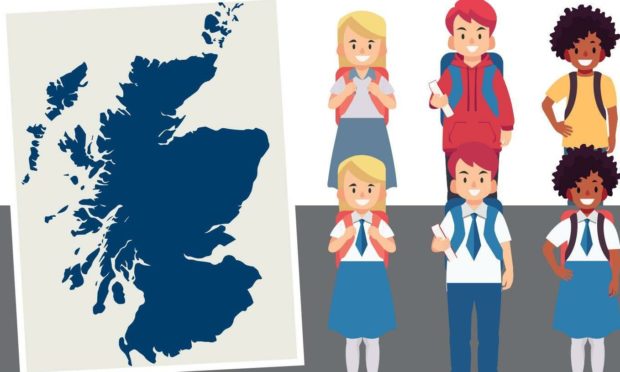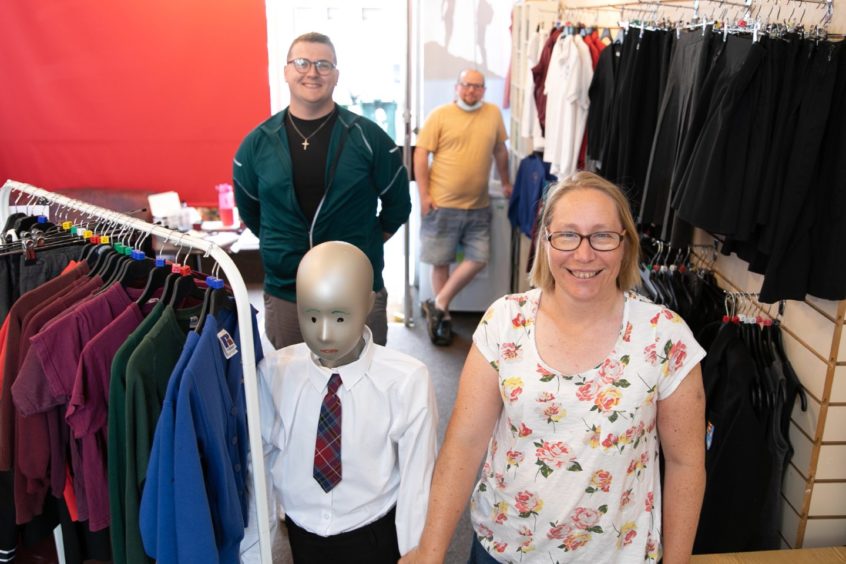From blazers and ties to polo shirts and jumpers, uniforms have been a mainstay in Scottish schools for generations.
But what should schools realistically expect pupils to wear, and how much is acceptable for families to pay to kit out their children?
Earlier this year, a bill to make provision for guidance to schools about the costs of school uniform policies was passed in Westminster.
This means that come September when their new year begins, schools in England will be told that they must keep branded items to a minimum.
Statutory guidance also exists in Wales and is clear that “no school uniform should be so expensive as to leave pupils or their families feeling unable to apply for admission or to attend a particular school.”
No such guidance currently exists in Scotland but as pupils gear up to head back to the classroom after the summer break, is it time to look again at uniform policies in Scotland?
“I don’t think we need all the bells and whistles”
One mum who believes there should be there should be greater guidance for schools is Elizabeth Philip, from Crieff.
The mum-of-two, who helped launch the Crieff school uniform bank last year, is in favour of having uniforms in schools but thinks they should be kept as simple as possible.
She said: “I think, personally, school uniforms are a good thing. They give young people a bit of identity and take away the competition of who’s got the best trainers or t-shirt.
“But I don’t think we need to go for all the bells and whistles that some school do.
“If we got rid of uniforms completely then it could show the children whose parents can’t afford to kit them out in the latest fashions.
“We would immediately create a social barrier for kids but if we have some form of standardised uniform, then that’s taken away.
“Everybody looks the same and it takes away the stigma.”
Elizabeth believes the pandemic provided an opportunity for schools to simplify their uniform policies, and said she was surprised by the inconsistency between school policies.
She said: “I was quite horrified at the disparity of the approach (to uniforms), especially during the pandemic.
“My experience was that I was putting my children out to school in their full school uniform and then working in a school where kids could wear what they want.
“It was a great opportunity to look at things and think what we want to get from school uniforms.”
What do schools expect pupils to wear?
Dr Rachel Shanks, a senior lecturer in the school of education at Aberdeen University, has researched school uniform policy in Scotland.
She found that as of 2019, of the 357 publicly funded secondary schools in Scotland, 343 (96%) require a uniform. Just 14 schools did not.
A total of 320 schools mandate the wearing of a school tie by both girls and boys, while 235 schools require a blazer to be worn and 200 ban jeans.
Dr Shanks’ research also found that almost 20% of secondary schools in Scotland specify an exclusive supplier for school uniform.
But what impact could these policies have on the finances of families?
A survey of around 1,000 parents across the UK, carried out by the charity The Children’s Society, found that parents with children in state schools spent on average £337 per year on school uniform for each secondary school child and £315 per year for each primary school child.
The requirement to purchase branded items from official suppliers has also been found to place an added financial burden on parents and carers.
A 2018 report into the cost of the school day in Dundee by the charity Child Poverty Action Group (CPAG) found that some parents reported a pressure to buy branded items only widely available in the official school shop, often at a higher cost.
Schools like St Paul’s RC Academy in Dundee, for example, require senior pupils to wear the school blazer, which can bought via the the school’s supplier, Be Uniforms.
These are listed online at a price of £38.90.
Similarly, Perth Academy’s uniform policy promotes the wearing of the school blazer with the school crest. These are priced online at £34.50.
How would statutory guidance help?
Dr Shanks’ research made a series of recommendations to the Scottish Government, including statutory guidance on school uniform policies to be developed with affordability as the top priority.
The research also recommended that the statutory guidance requires regular reviews of exclusive supply arrangements of school uniform items in order to reduce the cost of the school uniform.
Dr Shanks is also keen on involving young people in the process of setting a uniform policy in schools, and argued that the often traditional attire, including blazers and ties, may not have a place in the modern day.
She said: “In my briefing to MSPs and the Scottish Government, I suggested that if there was national guidance saying to schools you need to review this regularly, it would be a perfect opportunity to involve pupils.
“What should they be wearing? In more and more jobs, men don’t have to wear a shirt and tie and yet that is sort of what a school uniform is like.
“Then if we think about girls and young women, there are very few jobs where they would have to wear a tie. It’s hard to think of one.
“It would be great to involve young people in the decision making around what they are wearing during the school day.”
What help is available for uniform costs?
Last month the Scottish Government announced that the national school clothing grant had been raised to a minimum of £120 per eligible primary school pupil and £150 per eligible secondary school pupil.
It was previously a minimum of £100.
Figures from last year show that in the period between August and December 2020, one in three children in Dundee received a grant for school uniform.
Dundee City Council issued 6,165 school uniform grants from the start of the academic year through to December, which is around 34% of the 18,000 pupils in the city’s schools.
Perth and Kinross Council issued uniform grants to 12% of pupils at its schools in the same period (August and December 2020) – which equates to 1,974 of the 17,000 pupils there.
In Angus, the local authority issued uniform grants to 17% of its pupils between August and December 2020 – approving funds to 2,628 of the 15,263 pupils in the region.
What does the Scottish Government say?
The Scottish Government confirmed guidance is to be brought forward aiming to reduce costs.
A spokesperson said: “We know that uniform can be one of the most significant school costs for families and are committed to overcoming barriers to accessing education.
“We have already, in partnership with local authorities, delivered on our commitment to increase the level of school clothing grant in Scotland, increasing this vital support to at least £120 for primary school pupils and £150 for secondary school pupils in time for the start of the new school year.
“We will also bring forward guidance on school uniform policy with a view to ending expensive insistence on exclusive suppliers, to support our aim of reducing costs.”












